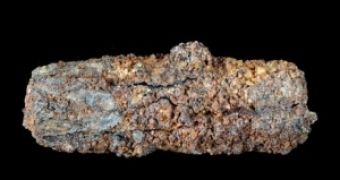Ancient Egyptians were utterly fascinated with the sky and everything having to do with it, so it's no wonder that they believed that meteorites were no more and no less than physical remains of gods that had fallen to Earth.
Hence their tracking down such bits and pieces of space debris and turning them into religious trinkets.
A study published in a recent issue of the journal Meteoritics & Planetary Science details how, after carefully analyzing a 5,000-year-old Egyptian relic, a team of specialists have reached the conclusion that it is made from a meteorite.
The relic is an iron bead which, when first looked at, fails to impress. However, the fact that the iron used to manufacture it came from space makes it worthy of the archaeologists' full attention. Nature informs us that the iron bead is shaped like a tube, and that it was discovered in 1911 while exploring a cemetery at Gerzeh, at a distance of about 70 kilometers (43.5 miles) of Cairo.
While looking into this bead’s make-up, researchers came to realize that the iron in it was particularly high in nickel. Apparently, this high nickel content (i.e. 30%) is a hallmark of iron meteorites.
Information having to do with the iron's structure supports this theory, the same source informs us.
“Using a combination of scanning electron microscopy and micro X-ray microcomputer tomography, we show that microstructural and chemical analysis of a Gerzeh iron bead is consistent with a cold-worked iron meteorite,” the researchers write in the abstract for their paper.
Eight other tube-beads were found alongside this one, and specialists say that they all contain iron and that they date back to about 3,300 BC.
This means that these trinkets are the oldest iron artifacts thus far dug out in Egypt.
“Our results show that the first known example of the use of iron in Egypt was produced from a meteorite, its celestial origin having implications for both the perception of meteorite iron by ancient Egyptians and the development of metallurgical knowledge in the Nile Valley,” the specialists further detail.

 14 DAY TRIAL //
14 DAY TRIAL //